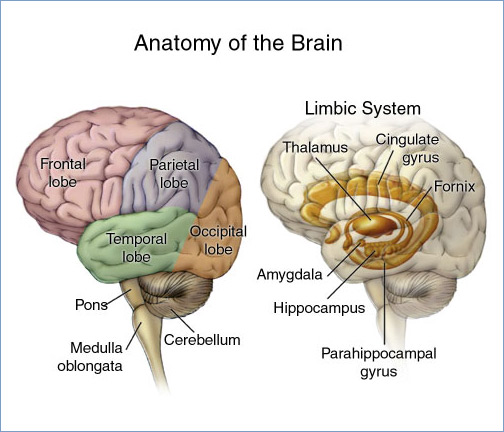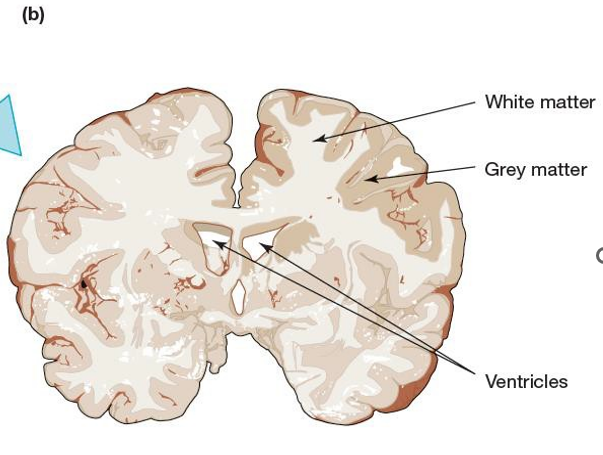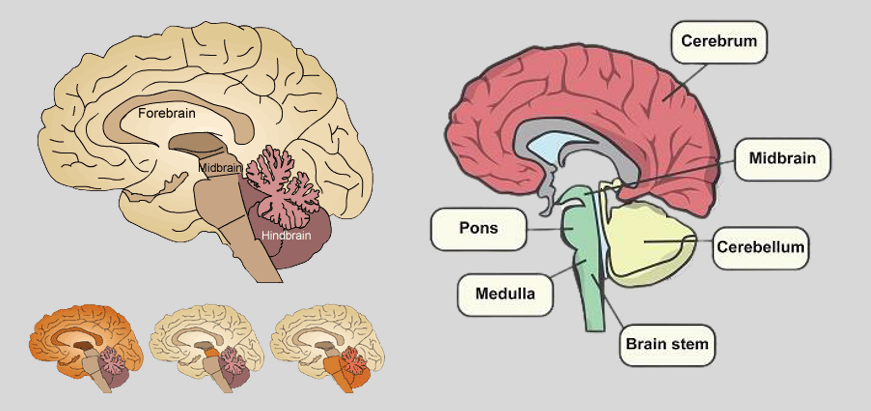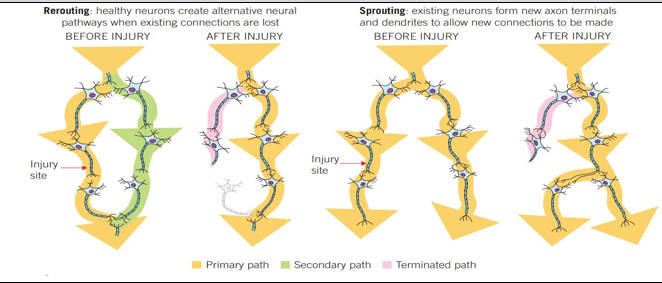Brain

Arteries: carry nutrients and oxygen-rich blood through the brain. without this blood, brain tissue quickly dies.
capillaries: (very thin blood vessels) from a blood-brain barrier which limits the entry of potentially harmful substances that may be present in our blood.
cerebral cortex: (outer layer of nerve tissue) cover the largest part of the brain (the cerebrum).
Grey matter: primarily composed of nerve cell bodies and connections, forms the outer cerebral cortex, which may appear pinkish in living brains due to blood capillaries.
White matter: primarily nerve fibers connecting brain areas, is abundant beneath the cortex and has a whitish appearance due to their fatty coating.
Ventricles (two wing-shaped cavities): The largest of the brain's four ventricles, filled with cerebrospinal fluid, form an inner communication network in the cerebrum.

Phrenology:
first called organology: the study of the size and shape of the human skull as an indicator of personality traits and mental functioning
ROLE OF THE HIDBRIAN< MIDBRIAN AND FORBRAIN:
BRIAN: a complex organ contained with the skull that coordinates mental processes and behaviors and regulated body activity.
Hindbrain: a collection of a lower brain structure, controls or influences various motor function and vital automatic response such as breathing and heart rate. it includes the cerebrum, medulla and pons.

cerebellum is responsible for: coordinating movement and balance and posture.
pons: relays signals between your forebrain and cerebellum. The pons is essential in sending information to your body, giving you sensory cues and motor information
medulla: controls automatic functions like breathing and heart rate.
FORBRAIN:
a collection of upper-level structures that regulates cognitive processes (thinking, learning memory and perception as well as emotion and personality. include the hypothalamus, thalamus and cerebrum.
Thalamus: relays sensory information to the cerebral cortex. filters information from the senses (not smell) and transmits (relays) the information to the relevant parts of the brain
Hypothalamus : a section of the brain that is responsible for the production of the bodys hormones that regulate different cells and organs.
amygdala: the part of the brain that's most closely associated with fear, emotions, and motivation
hippocampus: essential for information of new memories.
cerebrum: the largest part of your brain that is divided into two hemispheres and responsible for higher brain function, hunger and thirst.
Hemispheric Specialization:
left Hemisphere function:
- language processing:
Broca’s area (speech production), a specific are of cortext wich coordinates movement of the muscles required for speech and supplies this information to the appropriate motor cortex ( speach). and
Wernicke’s area (language comprehension), an area of the tempral lobe that plays a critical role in understanding the sound involed in human speech.
logical reasoning: analytical task, such as mathematics and logic.
Right hemisphere function:
Spatial abilities: understanding spatial relationships and visualizing images
facial recognition: recognizing faces and interpreting facial expressions.
music perception: Processing musical rhythm and melodies
Cortical lobe:
areas of the cerebral cortex associated with different unction
frontal: the executive refers to a collection of cognitive skills including the capacity to plan, organize, initiate.
processing auditory information and with the encoding of memory.
temporal: ears
the temporal lobe is meaningly involved with the Primarily auditory perception, plays an important role in memory.
primary auditory cortex:
has an important role in receiving and processing sounds. from both ears so that we can perceive and identify different types of sound.
parietal : sense
The parietal lobes are primarily responsible for receiving and processing sensory input such as touch, pressure, heat, cold, and pain
occipital lobes: eyes
The occipital lobe is the visual processing area of the brain. distance and depth perception, color determination
Neuroplasticity:
the ability of the brain and other parts of the nervous system to change in response to experience or injury / loss of function
synapse: the site where adjacent neurons communicate by transmitting neural signals to on another.
sprouting: new neural pathways can form (sprout) and link up with existing pathways.
re-routing: existing pathways may interconnect with other pathways ( route)

synaptic plasticity: changes in the strength and number of synapses between neurons.
structural plasticity: changes in the brains’ physical structure, such as growth of new neurons and the formation of new connections
functional plasticity: the brains ability to shift functions from damages areas to undamaged areas.
Acquired brain injury:
a type of brain injury an individual experiences after birth.
courses: traumatic events like strokes, infections, lack of oxygen
traumatic: damage to the brain caused by an external factor (e.g. sport injuries, fall assaults).
non traumatic : damage the brain caused by internal factors
Storke:
a common acquired brain injury involving an interruption to the blood supply in the brain or bleeding in the brain resulting in deterioration of brain (cells) tissue.
symptoms:
numbness or weakens of the body
trouble walking, dizziness, loss of balance
Neurological disorder:
a nervous system disorder, involving any part if the nervous system:
brain
spinal cord
the peripheral nervous system
Epilepsy: a neurological disorder involving recurrent, spontaneous seizures brought on by interference in normal brain activity.
Seizure:
uncontrolled, excessive electrical activity of neurons in the brain.
Chronic tromatic Encephalopathy:
is a progressive brain degeneration and fatal condition thought to be caused by repeated blows to the head and repeated episodes of concussion.
Concussion:
Concussion is a traumatic brain injury resulting from rapid head and brain movement, disrupting neuronal activity and potentially damaging brain tissue and cells.